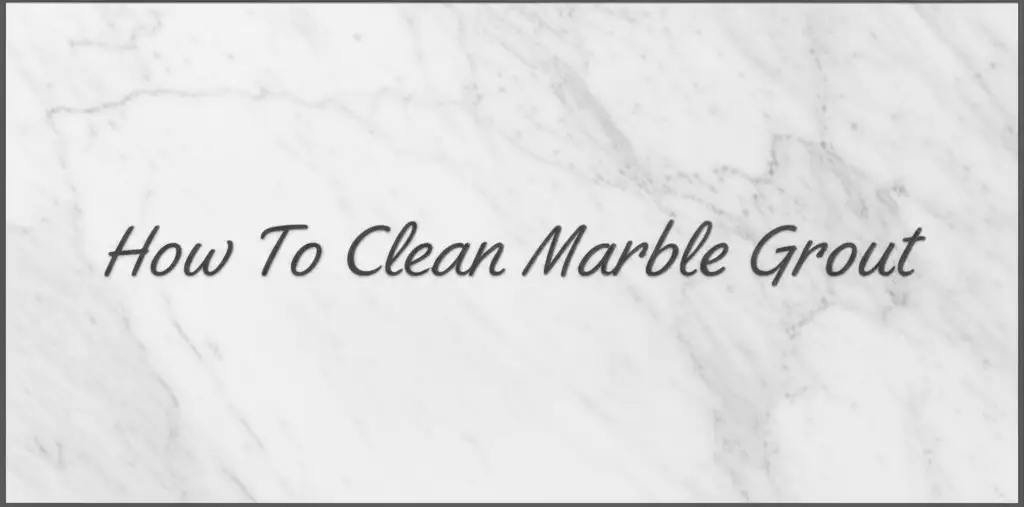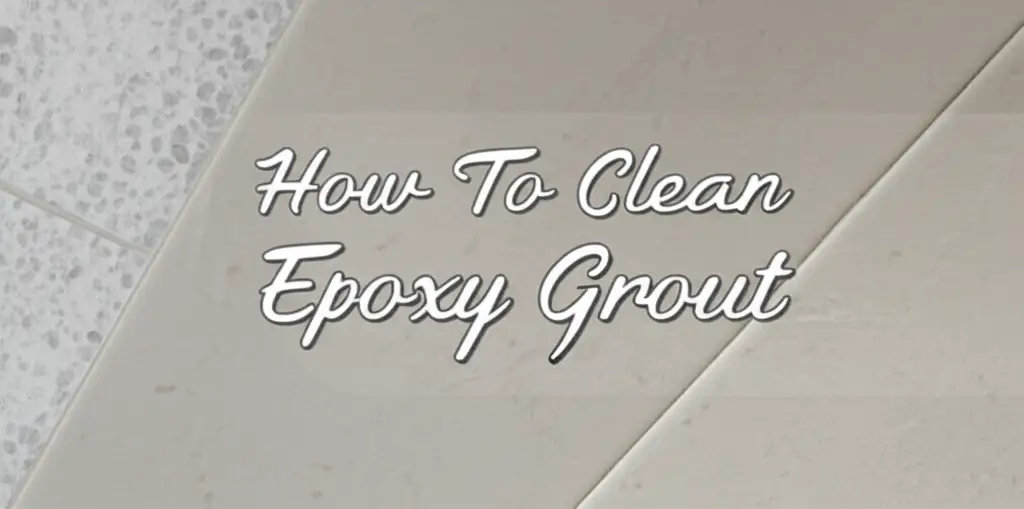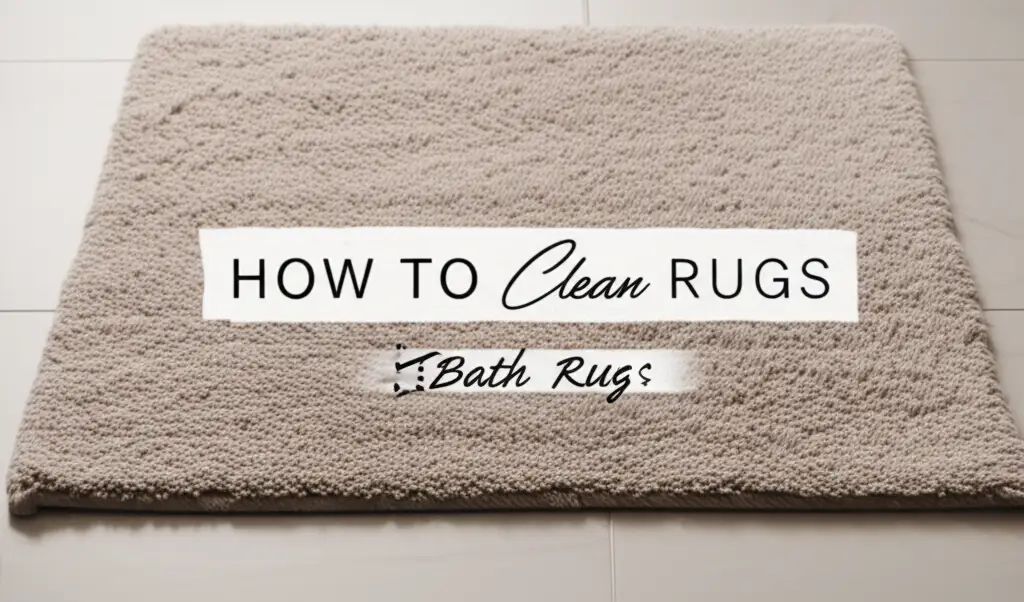· Home Cleaning · 16 min read
How To Clean Marble Grout

Gentle Ways to Clean Marble Grout Effectively
Maintaining the beauty of marble surfaces means paying attention to the grout lines. Dirty grout can make even the most pristine marble look dull. Knowing how to clean marble grout protects your valuable stone and keeps your spaces bright. This guide helps you understand the right tools and products to use. I will show you safe methods for daily care and stubborn stain removal.
Marble is a beautiful natural stone. Its delicate nature requires special care. Grout around marble tiles also needs gentle handling. Standard harsh cleaners can damage marble and its grout. You must choose cleaning methods that preserve your stone’s integrity. I will cover everything from basic cleaning steps to advanced stain solutions. We will also discuss preventative measures for long-lasting results.
Takeaway
- Always use pH-neutral cleaners for marble and its grout.
- Test any cleaning solution in a small, hidden area first.
- Use soft brushes or cloths to avoid scratching marble surfaces.
- Rinse cleaned areas thoroughly to remove all cleaner residue.
- Consider sealing your grout to prevent future stains and simplify cleaning.
How do you clean marble grout?
You clean marble grout using gentle, pH-neutral cleaners and soft tools. First, you pre-wet the grout. Then, you apply the cleaner, lightly scrub with a soft brush, and rinse well. This approach protects the delicate marble while effectively removing dirt and grime from the grout lines.
Understanding Marble and Grout Sensitivity
Marble is a stunning natural stone. It brings elegance to any room. However, marble is also a porous material. This means it absorbs liquids and is sensitive to acids. Grout lines around marble tiles are often made from cement-based materials. These materials are also porous. They can absorb dirt, grime, and colored liquids easily.
The porosity of marble and grout makes them vulnerable to damage from harsh cleaners. Acidic solutions, like vinegar or many common bathroom cleaners, can etch or dull marble. They can also degrade the grout, making it crumbly or discolored. Alkaline cleaners can also harm marble over time. It is important to use cleaners that are pH-neutral. These cleaners match the natural pH of water. They will not react with your marble or grout.
Different grout types exist. Most marble installations use standard cementitious grout. This grout is porous and needs sealing. Some installations use epoxy grout. Epoxy grout is less porous and more stain-resistant. However, even epoxy grout benefits from gentle cleaning to maintain its appearance. You must identify your grout type to choose the best cleaning approach. Always prioritize the safety of your marble when choosing any cleaning product or method. Learn more about caring for natural stone surfaces in general by reading our guide on how to clean natural stone tile and grout.
Harsh scrubbing tools also pose a risk. Stiff bristle brushes can scratch marble surfaces. They can also wear down grout lines. This makes grout even more susceptible to staining. Always choose soft brushes or non-abrasive pads. This protects your beautiful marble and its surrounding grout. Understanding these sensitivities is the first step toward effective and safe cleaning. If you encounter specific stains on your marble, we have a helpful resource on how to clean stains on marble.
Essential Tools and Gentle Cleaners for Marble Grout
Having the right supplies makes cleaning marble grout much easier and safer. Using harsh chemicals or abrasive tools risks damaging your beautiful marble. I always recommend gathering your materials before you start. This ensures a smooth cleaning process.
First, you need the right cleaning agents. A pH-neutral stone cleaner is your primary choice. These cleaners are specifically designed for natural stone. They will not etch or dull marble. You can find them at most home improvement stores or specialized stone care shops. I sometimes use a very mild dish soap diluted in water for light cleaning. Ensure it is a basic, dye-free dish soap without harsh additives. For more stubborn stains, hydrogen peroxide is a good option. It acts as a gentle bleaching agent without the acidity of vinegar or harshness of bleach. You can learn more about its benefits for grout cleaning by checking out our article on how to clean grout with hydrogen peroxide.
Next, you need suitable tools. Forget wire brushes or abrasive scrub pads. These will scratch your marble and damage the grout. I use a soft-bristle brush, like a nylon scrub brush or an old toothbrush. These tools let you work the cleaner into the grout lines without harming the surrounding stone. Microfiber cloths are essential for wiping and rinsing. They are highly absorbent and lint-free. You also need two buckets: one for your cleaning solution and one for clean rinse water. A spray bottle helps apply cleaners evenly.
Always test any new cleaner or method in an inconspicuous area first. This step is non-negotiable. Apply a small amount of cleaner to a hidden grout line and a tiny corner of the marble. Wait a few minutes. Check for any discoloration, etching, or adverse reactions. If the area looks good, you can proceed with confidence. This simple test prevents potential damage to your entire marble surface.
Step-by-Step Guide to Cleaning Marble Grout
Cleaning marble grout requires a careful, methodical approach. Following these steps helps you achieve clean grout without damaging your marble. I always start with preparation to make the job smoother.
Preparation for Cleaning
Begin by removing any loose dirt or debris from the area. I use a soft broom or vacuum cleaner for floors. For countertops or showers, a dry microfiber cloth works well. This prevents you from spreading dirt around during the wet cleaning process. Ensure the area is well-ventilated, especially if using any commercial cleaners. You want fresh air circulating.
Daily Maintenance and Light Cleaning
For light dirt, I often start with just warm water. Dip a soft-bristle brush into clean water. Gently scrub the grout lines. Wipe the area with a damp microfiber cloth. Then, dry it immediately with another clean, dry cloth. This simple routine prevents dirt buildup and makes deep cleaning less frequent.
Deep Cleaning Method
When grout needs more attention, I follow these steps:
- Spot Test: As mentioned, always test your chosen cleaner in a hidden area first. Apply a small amount to a grout line and the adjacent marble. Wait 5-10 minutes. Check for any discoloration or damage. If all looks good, continue.
- Pre-Wet the Grout: Lightly spray the grout lines with clean water. This helps prevent the cleaning solution from absorbing too deeply into the porous grout. It also helps to dilute the cleaner further, making it even gentler.
- Apply Cleaner: Mix your pH-neutral stone cleaner according to its instructions. If using hydrogen peroxide, you can use it straight or dilute it slightly with water. Pour the solution into a spray bottle. Spray the cleaner directly onto the wet grout lines. Let it sit for 5-10 minutes. Do not let the cleaner dry on the surface.
- Gentle Scrubbing: Take your soft-bristle brush or an old toothbrush. Gently scrub the grout lines in small sections. Focus on removing the dirt. Avoid scrubbing the marble surface itself with the brush. The goal is to lift the grime from the grout without being aggressive. For floors, our guide on how to clean grout on marble floors offers more specific advice.
- Rinse Thoroughly: This is a crucial step. Fill one bucket with clean, plain water. Dip a clean microfiber cloth into the water, wring it out well, and wipe down the cleaned grout and surrounding marble. Rinse the cloth frequently in the clean water bucket. Repeat this wiping and rinsing several times. You want to remove all traces of the cleaning solution. Any residue can attract dirt or cause dullness over time.
- Dry the Surface: Use a fresh, dry microfiber cloth to thoroughly dry the marble and grout. Leaving water to air dry on marble can lead to water spots or mineral deposits. This is especially important for areas like shower floors. Our article on how to clean marble shower floor offers more specific details for that space.
Repeat this process for all areas of your marble grout. Work in small sections to keep the cleaner from drying and to ensure thorough rinsing.
Tackling Stubborn Stains and Discoloration on Marble Grout
Sometimes, regular cleaning is not enough for heavily soiled or stained marble grout. Stubborn stains and discoloration need a more focused approach. You must remain gentle to protect the marble. I often encounter common issues like mold, mildew, or general darkening.
Mold and mildew thrive in damp environments. They often appear as black or dark spots on grout lines. For these, a hydrogen peroxide solution is effective. Hydrogen peroxide acts as an oxygen-based cleaner. It helps break down organic matter like mold without harsh chemicals. I mix 3% hydrogen peroxide with a small amount of baking soda to form a thick paste. This paste creates a mild abrasive action and helps the hydrogen peroxide cling to the grout. Apply the paste directly onto the moldy grout lines. Let it sit for 30 minutes to an hour. Then, gently scrub with a soft brush and rinse thoroughly. Our guide on how to clean mold from grout offers more in-depth advice.
General darkening or blackening of grout often comes from accumulated dirt and grime. If your grout has turned dark, despite regular cleaning, it might need deeper attention. A gentle alkaline cleaner, specifically formulated for natural stone, can sometimes help. You must be extremely cautious with these products. Always ensure they are safe for marble. Alternatively, you can use the hydrogen peroxide and baking soda paste mentioned above. It often works wonders for general discoloration. Apply it, let it sit, scrub, and rinse. This method effectively brightens and restores grout color. If your grout has indeed turned black, our article on how to clean grout that has turned black provides extra guidance.
For deep-set stains, like oil, grease, or colored spills, a poultice might be necessary. A poultice is a paste that draws stains out of porous materials. You can make one by mixing an absorbent material (like kaolin clay or baking soda) with a chemical agent (like hydrogen peroxide for organic stains or denatured alcohol for oil-based stains). The consistency should be like peanut butter. Apply a thick layer over the stain. Cover it with plastic wrap and tape the edges down. Let it sit for 24-48 hours. The poultice slowly dries, drawing the stain into itself. After drying, gently scrape off the hardened paste. Rinse the area well with clean water. Then, dry it completely. Always test a poultice in an unseen spot first. Different stains require different poultice recipes. For more detailed stain removal on marble, consider reading our advice on how to clean marble countertops stains.
Special Considerations for Marble Grout in Different Areas
Marble grout exists in various parts of our homes. Each location presents unique cleaning challenges. Understanding these differences helps you tailor your approach for optimal results. I focus on specific areas like showers, countertops, and floors.
Shower Areas
Marble showers offer a luxurious feel. However, they face constant exposure to water, soap scum, and humidity. This environment makes grout prone to mold, mildew, and hard water stains. When cleaning grout in a marble shower, you must act frequently. I recommend a quick wipe-down after each use to minimize moisture buildup. Use a soft squeegee on the tiles and a microfiber cloth on the grout.
For weekly cleaning, use your pH-neutral stone cleaner. Spray the grout lines and the surrounding marble. Allow the cleaner to sit for a few minutes. Then, gently scrub with a soft brush. Pay extra attention to corners and low spots where water pools. Rinse thoroughly to remove all soap and cleaner residue. Proper ventilation is key. Always run an exhaust fan during and after showers to reduce humidity. This prevents mold and mildew growth. Our comprehensive guide on how to clean grout in shower offers more detailed steps for this humid environment. You can also learn more about cleaning the entire shower area, including tiles and grout, by reading our guide on how to clean shower tiles and grout.
Countertops
Marble countertops are beautiful, but they see spills from food, drinks, and cosmetics. Grout lines on countertops can absorb these spills, leading to stains. Immediate cleanup is the best defense here. I wipe up any spills on my marble countertops immediately. Do not let liquids sit on the surface.
For daily cleaning of countertop grout, a damp microfiber cloth is usually enough. For a deeper clean, spray a pH-neutral stone cleaner directly onto the grout lines. Let it sit for a moment. Then, gently scrub with an old toothbrush or a soft-bristle brush. Rinse thoroughly with clean water. Dry the surface immediately. Be extra careful with acidic foods like lemon juice or tomato sauce near marble countertops. They can etch the stone and damage the grout quickly. For specific advice on cleaning marble countertops, particularly in bathrooms, our article on how to clean marble countertops in bathrooms provides valuable insights.
Floors
Marble floors are high-traffic areas. This means grout lines on floors collect a lot of dirt, dust, and grime. Regular vacuuming or sweeping is crucial. This removes loose particles that can get ground into the grout. I sweep my marble floors daily.
For wet cleaning, use a pH-neutral cleaner specifically for stone floors. Dilute it according to the manufacturer’s instructions. Use a damp mop, but avoid saturating the floor. Excessive water can seep into grout and cause problems. For stubborn grout lines, you might need to get on your hands and knees. Apply the cleaner directly to the grout. Scrub gently with a soft-bristle brush. Rinse well with clean water using a clean mop or bucket and cloth. Always dry the floor completely after cleaning to prevent water spots and streaks. Our article on how to clean tile grout on floors provides general guidance that also applies to marble tile floors.
Preventing Future Grout Issues and Maintaining Marble
Prevention is always easier than cleaning deep-set stains. Regular maintenance helps keep your marble grout looking new for years. I focus on consistent habits and protective measures to prevent issues before they start.
The most important step for preventing grout issues is sealing. Grout is porous. Sealing creates a protective barrier on the surface. This barrier helps repel liquids and stains. It does not make grout stain-proof, but it gives you more time to clean spills before they penetrate. I recommend using a good quality penetrating grout sealer designed for natural stone. Apply it according to the manufacturer’s instructions. This usually involves cleaning the grout thoroughly first. Then, you apply the sealer with a brush or applicator. Wipe off any excess from the tile surface. I typically re-seal my marble grout every 1-3 years, depending on traffic and use. Areas like showers might need more frequent sealing. Our article on how to clean grout before sealing can help you prepare for this important step.
Regular cleaning prevents dirt from building up. For marble grout, “regular” means daily or weekly light cleaning. I use a pH-neutral cleaner or just water. This stops grime from becoming deeply embedded. Remember, it is far easier to wipe away fresh dirt than to scrub out old, caked-on grime. Consistent, gentle cleaning saves you from needing aggressive methods later.
Prompt spill cleanup is vital. Marble and its grout are absorbent. Colored liquids like wine, coffee, or juice can quickly seep in and cause permanent stains. If a spill happens, blot it immediately with a clean, dry cloth. Do not wipe or spread the spill. Blotting lifts the liquid. Then, clean the area with a damp cloth and dry it thoroughly. This quick action protects both your marble and its grout.
Consider using doormats at entries for marble floors. This traps dirt and grit before it reaches your stone. In bathrooms and kitchens, use rugs or mats in high-spill areas. These absorb potential spills and protect the floor. Proper ventilation, especially in bathrooms, reduces moisture. This prevents mold and mildew from forming in grout lines. Good airflow helps the grout dry faster after use. These simple preventive measures extend the life and beauty of your marble and its grout.
FAQ Section
Can I use bleach on marble grout?
No, you should avoid using bleach on marble grout. Bleach is a harsh chemical. It can discolor or damage porous grout. It can also cause etching or dullness on marble surfaces, especially with repeated use. Always opt for gentler, pH-neutral cleaners or hydrogen peroxide for cleaning.
How often should I clean marble grout?
You should clean marble grout regularly. Light cleaning can occur daily or weekly with water or a mild cleaner. Deep cleaning, using a pH-neutral stone cleaner, can be done monthly or every few months, depending on traffic and visible dirt.
What is the best cleaner for marble grout?
The best cleaner for marble grout is a pH-neutral stone cleaner. These products are formulated not to damage delicate marble or its cementitious grout. For stubborn stains or mold, hydrogen peroxide (3%) is also a safe and effective option when used correctly.
Does sealing grout prevent stains?
Yes, sealing grout significantly helps prevent stains. A penetrating sealer creates a protective barrier that repels liquids and slows absorption. This gives you more time to clean up spills before they penetrate and cause permanent stains in the porous grout material.
Can vinegar damage marble grout?
Yes, vinegar can damage marble grout. Vinegar is acidic. It will etch and dull marble surfaces. It can also degrade cementitious grout over time, making it brittle or discolored. Always avoid using acidic cleaners like vinegar, lemon juice, or harsh bathroom cleaners on marble or its grout.
Conclusion
Caring for marble grout needs a gentle but consistent approach. You have learned that harsh chemicals and abrasive tools are not suitable for delicate marble and its porous grout lines. Instead, prioritize pH-neutral cleaners, soft brushes, and thorough rinsing. This protects your beautiful investment.
Remember, understanding the unique sensitivities of marble is key. By following these cleaning methods, from daily maintenance to tackling stubborn stains, you keep your grout clean and your marble gleaming. Regular sealing acts as your primary defense against future problems. It creates a protective barrier, making cleaning much easier.
With the right tools, gentle products, and a little effort, your marble grout will remain clean and beautiful. I encourage you to apply these techniques to your own home. You will enjoy pristine marble surfaces for years to come. Start today and see the difference a gentle approach makes when you clean marble grout in your home.
- marble grout cleaning
- natural stone grout
- gentle grout cleaner
- sealed marble grout
- grout maintenance




